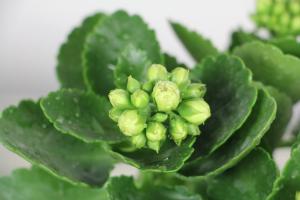How to Prepare Outdoor Potted Plants for Indoor Overwinter
If you have outdoor potted plants that can't survive the harsh winter months, you can bring them indoors to keep them alive until spring. However, transition shock can be fatal for plants. Here's how to prepare outdoor potted plants for indoor overwinter:
Choose the Right Plants
The best plants for indoor overwintering are those that naturally thrive in an interior environment with low light and low humidity. Examples of such plants include spider plants, pothos, ferns, and snake plants. Also, plants that can thrive in cooler temperatures between 50 to 60 degrees Fahrenheit are best for indoor overwinter. These include cyclamen, begonias, and amaryllis.
Prune Your Plants
Before you bring your outdoor potted plants inside, give them a quick prune. This pruning will help shape your plants and increase airflow, which can prevent fungus and mold growth. You may also want to remove any dead or damaged leaves and stems.
Check for Pests
Outdoor potted plants can harbor pests, which can quickly spread to your other indoor plants. Before you bring your plants inside, inspect them thoroughly, including the soil. If you see any signs of pests, isolate the affected plants, treat them with an appropriate pesticide or insecticide, and monitor them closely.
Gradually Acclimate Your Plants
Despite your best efforts, the indoor environment may still be a change for your outdoor potted plants. Introduce your plants to their new environment gradually. Start by placing your plants in a partially shaded area with low light for a few hours a day, gradually increasing the amount of time spent indoors. This gradual acclimation will reduce the shock of the new environment and prevent damage to the plant.
Provide the Right Environment
Once your outdoor potted plants are inside, provide them with the right environment to keep them healthy during the winter. Aim to keep the temperature between 50 to 60 degrees Fahrenheit and humidity levels around 40%. Also, place your plants in areas with indirect light to prevent burning leaves. You may also want to supplement with artificial light to provide sufficient light in low-light areas.
Monitor Your Plants
Monitor your plants closely during the winter months. Note any changes in growth, appearance, or behavior. Adjust watering and fertilization as necessary. Watch for pests and diseases that may affect your plants, and treat them promptly to prevent further damage.
Conclusion
Indoor overwintering can save your outdoor potted plants from the cold, but transition shock can be deadly if not handled properly. With these tips, you can help your plants make the switch and thrive in their new environment. Remember to choose the right plants, prune them, check for pests, gradually acclimate them, provide the right environment, and monitor them closely.

 how many times do yo...
how many times do yo... how many planted tre...
how many planted tre... how many pine trees ...
how many pine trees ... how many pecan trees...
how many pecan trees... how many plants comp...
how many plants comp... how many plants can ...
how many plants can ... how many plants and ...
how many plants and ... how many pepper plan...
how many pepper plan...































